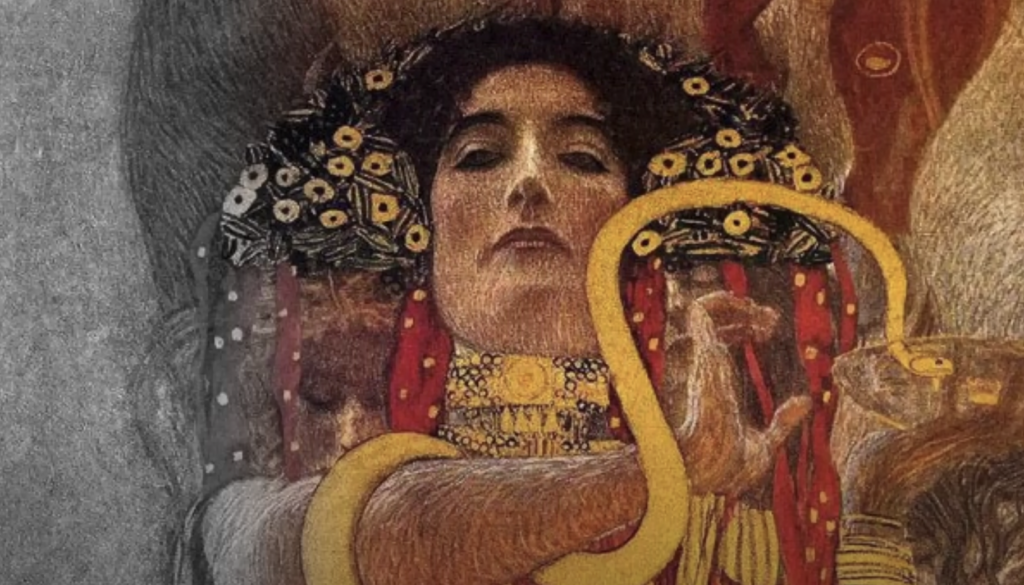Art
How the Avant-Garde Art of Gustav Klimt Got Perversely Appropriated by the Nazis – Open Culture

[embedded content]
On paper, the Nazis shouldn’t have liked Gustav Klimt. As gallerist and Youtuber James Payne says in his new Great Art Explained video above, their denunciatory “Degenerate Art Exhibition” of 1937 included the work of “Paul Klee, Otto Dix, Pablo Picasso, Marc Chagall, and Piet Mondrian, as well as Egon Schiele and Oskar Kokoschka” — but somehow not Klimt, “who, at one time or another, had been described as morally questionable, obscene, or even pornographic, and was friends with Jewish patrons, intellectuals, and artists.” And it isn’t as if the Nazis just ignored his work; in fact, they actively pressed a few of his paintings into the service of their ideology.
The search for those paintings, and thus an answer to the question of how they could have been given a pro-Nazi spin, takes Payne to Vienna (this video being part of his Great Art Cities sub-series). It was there that the 22-year-old Klimt — along with his brother Ernst and their friend Franz Mach — received the career-making commission, straight from the emperor himself, to paint a series of ten historical murals on the ceilings and walls of the city’s storied Burgtheater. This made possible Klimt and Mach’s next major mural project for the University of Vienna, though the former’s contributions were rejected by the officials, and later deliberately destroyed by German forces retreating at the war’s end.
Having died in 1918, Klimt never learned of his work’s ultimate fate (much less its more recent reconstruction with artificial intelligence). Even by the time the Nazis rose to power, he’d been dead long enough for them to appropriate his art, and even the much more daring art he made after the University of Vienna debacle. Take his Beethoven Frieze from 1902, a “34-meter-long homage to Beethoven’s Ninth Symphony as interpreted by Richard Wagner: Hitler’s favorite piece of music, often played at Nazi rallies, interpreted by his favorite composer.” That Klimt “celebrates the triumph of idealism over materialism” seems to have represented enough of a philosophical overlap to be useful to the Third Reich.
“In 1943, in Vienna, the Nazis even sponsored the largest-ever retrospective of Klimt’s art.” Indeed, Payne identifies “a Teutonic quality to Klimt’s work that would have appealed to the Nazi aesthetic.” But he could also be portrayed as “part of the Austrian folk tradition” with “German philosophical roots,” and like conventional Nazi artists, Klimt made much use of classical icons and nude bodies. Yet there is little in his life or worldview of which the Nazis could possibly have approved, and even his work itself suggests that he knew full well the dangers of popular appeal. “If you cannot please everyone with your actions and art, you should satisfy a few,” says the quotation from the poet and philosopher Friedrich Schiller incorporated into Klimt’s 1899 painting Nuda Veritas. “To please many is dangerous.”
Related content:
The Nazis’ Philistine Grudge Against Abstract Art and The “Degenerate Art Exhibition” of 1937
Gustav Klimt’s Masterpieces Destroyed During World War II Get Recreated with Artificial Intelligence
Based in Seoul, Colin Marshall writes and broadcasts on cities, language, and culture. His projects include the Substack newsletter Books on Cities, the book The Stateless City: a Walk through 21st-Century Los Angeles and the video series The City in Cinema. Follow him on Twitter at @colinmarshall or on Facebook.
Art
Ukrainian sells art in Essex while stuck in a warzone – BBC.com
[unable to retrieve full-text content]
Ukrainian sells art in Essex while stuck in a warzone BBC.com

Source link
Art
Somerset House Fire: Courtauld Gallery Reopens, Rest of Landmark Closed
The Courtauld Gallery at Somerset House has reopened its doors to the public after a fire swept through the historic building in central London. While the gallery has resumed operations, the rest of the iconic site remains closed “until further notice.”
On Saturday, approximately 125 firefighters were called to the scene to battle the blaze, which sent smoke billowing across the city. Fortunately, the fire occurred in a part of the building not housing valuable artworks, and no injuries were reported. Authorities are still investigating the cause of the fire.
Despite the disruption, art lovers queued outside the gallery before it reopened at 10:00 BST on Sunday. One visitor expressed his relief, saying, “I was sad to see the fire, but I’m relieved the art is safe.”
The Clark family, visiting London from Washington state, USA, had a unique perspective on the incident. While sightseeing on the London Eye, they watched as firefighters tackled the flames. Paul Clark, accompanied by his wife Jiorgia and their four children, shared their concern for the safety of the artwork inside Somerset House. “It was sad to see,” Mr. Clark told the BBC. As a fan of Vincent Van Gogh, he was particularly relieved to learn that the painter’s famous Self-Portrait with Bandaged Ear had not been affected by the fire.
Blaze in the West Wing
The fire broke out around midday on Saturday in the west wing of Somerset House, a section of the building primarily used for offices and storage. Jonathan Reekie, director of Somerset House Trust, assured the public that “no valuable artefacts or artworks” were located in that part of the building. By Sunday, fire engines were still stationed outside as investigations into the fire’s origin continued.
About Somerset House
Located on the Strand in central London, Somerset House is a prominent arts venue with a rich history dating back to the Georgian era. Built on the site of a former Tudor palace, the complex is known for its iconic courtyard and is home to the Courtauld Gallery. The gallery houses a prestigious collection from the Samuel Courtauld Trust, showcasing masterpieces from the Middle Ages to the 20th century. Among the notable works are pieces by impressionist legends such as Edouard Manet, Claude Monet, Paul Cézanne, and Vincent Van Gogh.
Somerset House regularly hosts cultural exhibitions and public events, including its popular winter ice skating sessions in the courtyard. However, for now, the venue remains partially closed as authorities ensure the safety of the site following the fire.
Art lovers and the Somerset House community can take solace in knowing that the invaluable collection remains unharmed, and the Courtauld Gallery continues to welcome visitors, offering a reprieve amid the disruption.
Art
Sudbury art, music festival celebrating milestone

Sudbury’s annual art and music festival is marking a significant milestone this year, celebrating its long-standing impact on the local cultural scene. The festival, which has grown from a small community event to a major celebration of creativity, brings together artists, musicians, and visitors from across the region for a weekend of vibrant performances and exhibitions.
The event features a diverse range of activities, from live music performances to art installations, workshops, and interactive exhibits that highlight both emerging and established talent. This year’s milestone celebration will also honor the festival’s history by showcasing some of the artists and performers who have contributed to its success over the years.
Organizers are excited to see how the festival has evolved, becoming a cornerstone of Sudbury’s cultural landscape. “This festival is a celebration of creativity, community, and the incredible talent we have here in Sudbury,” said one of the event’s coordinators. “It’s amazing to see how it has grown and the impact it continues to have on the arts community.”
With this year’s milestone celebration, the festival promises to be bigger and better than ever, with a full lineup of exciting events, workshops, and performances that will inspire and engage attendees of all ages.
The festival’s milestone is not just a reflection of its past success but a celebration of the continued vibrancy of Sudbury’s arts scene.

-

 News18 hours ago
News18 hours agoSingh claps back at Poilievre ahead of House return
-

 News24 hours ago
News24 hours agoArrest made in death of man whose body was found four years ago: police
-

 News18 hours ago
News18 hours agoMore than 67 million people watched Donald Trump and Kamala Harris debate. That’s way up from June
-

 News18 hours ago
News18 hours agoTaxi driver suspected in fatal B.C. hit-and-run has left Canada: RCMP
-

 News18 hours ago
News18 hours agoThe ancient jar smashed by a 4-year-old is back on display at an Israeli museum after repair
-

 News7 hours ago
News7 hours agoReggie Bush was at his LA-area home when 3 male suspects attempted to break in
-

 News18 hours ago
News18 hours agoMounties say there’s no evidence Lytton, B.C., wildfire was arson; cause unknown
-

 News17 hours ago
News17 hours agoSouthern Baptist trustees back agency president but warn against needless controversy





















